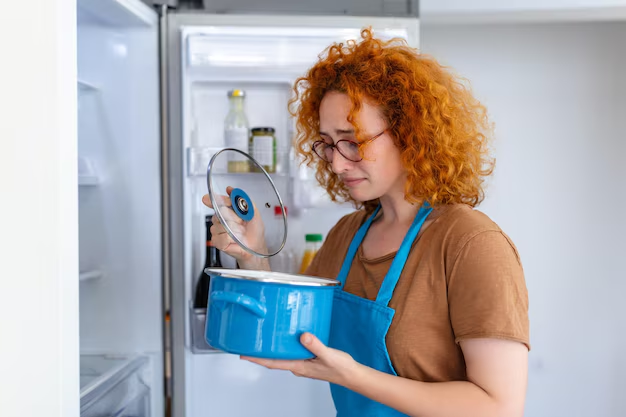Why Is My Refrigerator Freezing Food and How Can I Fix It?
Are you opening your refrigerator only to find your fresh produce unexpectedly icy? You’re not alone. Countless individuals experience the frustration of finding their milk, vegetables, or leftovers partially frozen without a clue as to why it’s happening. Understanding the root cause of this issue requires a blend of insight into refrigerator mechanics and practical troubleshooting. Here, we’ll navigate through some common causes and straightforward solutions, helping you ensure that your fridge maintains just the right temperature for all your culinary needs.
Understanding the Problem: Why Your Refrigerator Freezes Food
1. Incorrect Temperature Settings
One of the simplest yet most overlooked causes of frozen food in refrigerators is setting the temperature too low. Refrigerators need to be cold, but not too cold—typically, the ideal temperature range for the fridge section is between 37°F and 40°F (3°C to 4°C). If your temperature control is set lower than this, it could easily lead to unwanted freezing.
2. Blocked Air Vents
Refrigerators use cold air circulation to maintain the proper temperature. If the vents that allow this flow are obstructed, certain sections of the fridge might end up colder than others. Check both internal and external vents for blockages or obstructions stemming from food items that are improperly positioned.
3. Thermostat or Thermistor Malfunction
Your fridge relies on sensors—thermostats or thermistors—to measure the internal temperature and adjust the compressor’s activity. If these sensors are faulty, the fridge might continue to cool even when the desired temperature is reached, leading to freezing food.
4. Damaged Door Seals
Worn or damaged door seals can prevent the refrigerator door from closing properly, leading to the motor running constantly to compensate for escaping cold air. This excessive cooling can result in freezing.
5. Control Panel or Circuit Board Issues
Modern fridges often have electronic control boards that manage various functions, including temperature control. A malfunction here can lead to improper temperature settings, causing freezing within the fresh food compartment.
Troubleshooting and Solutions
Now that we understand the common problems, let’s explore actionable solutions to prevent your fridge from turning into an impromptu freezer.
Adjusting Temperature Controls
Step 1: Start with checking your refrigerator’s temperature setting. Ensure it is set within the recommended range of 37°F to 40°F (3°C to 4°C). For precise adjustment:
- Tip: Use a separate refrigerator thermometer to cross-verify the built-in temperature display or dial.
Inspecting for Airflow Obstructions
Step 2: Ensure there’s good airflow within the fridge. This involves:
- Rearranging contents to avoid blocking vents.
- Regularly defrosting manual-defrost models to prevent ice buildup that can clog ventilation pathways.
Checking Door Seals
Step 3: Examine the door seals (gaskets) for any signs of wear or damage.
- Tip: Close the door on a thin piece of paper. If the paper slides out easily, the seal may not be tight enough.
- Consider replacing worn seals. This can prevent excessive cooling and reduce energy consumption.
Investigating Component Malfunctions
Step 4: Look into more technical components if the problem persists.
- Tip: If possible, consult your refrigerator’s manual to locate thermostats or thermistors.
- A faulty component might need professional evaluation for repair or replacement.
Resetting or Evaluating the Control Board
Step 5: For refrigerators equipped with electronic control boards:
- Unplug the refrigerator for a few minutes to reset the system.
- Monitor if the problem continues. A persistent issue might mean the control board requires inspection or replacement.
General Maintenance Tips to Prevent Freezing
- Regular Cleaning: Keep the condenser coils clean to ensure efficient function.
- Defrost Regularly: For models that don’t auto-defrost, regular defrosting can prevent frost accumulation.
- Organize Contents: Allow adequate space around items for proper air circulation.
- Energy-efficient Practices: Avoid opening the fridge door too often, which can overload the cooling mechanism.
When to Call a Professional
While many of the adjustments and checks can be performed by you, some situations necessitate professional intervention:
- Persistent freezing despite adjustments and maintenance.
- Unusual noises indicating possible motor or compressor issues.
- Visible damage or unfamiliar odors that might indicate electrical faults.
A Quick Recap: Key Tips to Avoid Frozen Food
Here’s a handy checklist to prevent your fridge from turning food into ice blocks:
- 🧊 Set Optimal Temperature: Keep it between 37°F and 40°F.
- 📦 Ensure Clear Vents: Place items to allow unobstructed ventilation.
- 🚪 Inspect Door Seals: Check for and fix any air leaks.
- 🛠️ Monitor Parts: Keep an eye on the thermostat and control board functionality.
- 🔄 Regular Maintenance: Clean coils and defrost as needed.
Final Thoughts
Fixing a refrigerator that’s overfreezing your food requires a blend of simple interventions and sometimes, expert help. By understanding the mechanics and ensuring regular maintenance, you can usually resolve the issue swiftly, saving your produce and maintaining your refrigerator’s efficiency. Taking these steps will not only preserve your food better but also enhance the longevity and efficiency of your appliance. Always remember, when in doubt, contacting a professional technician can save time and prevent further appliance damage.
